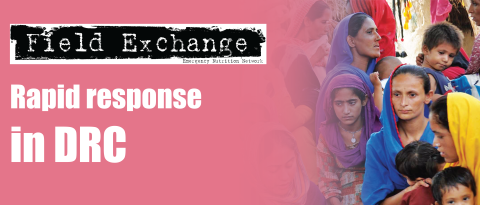Invited commentary: improving estimates of severe acute malnutrition requires more data
Summary of commentary1
Authors of an invited commentary on a recent paper by Isanaka et al (2016), that described development of an updated incidence-correction factor for severe acute malnutrition (SAM), reflected their surprise on the lack of high-quality data supporting global estimates of SAM burden in children. This prompted an online search for a few more cohorts that could have contributed longitudinal data to the meta-analysis, but yielded no further results. They conclude this study makes a huge contribution to literature on SAM incidence in children.
The reviewers highlight the challenge of developing a single-figure estimate of SAM burden, and identify inconsistencies in estimates –19 million in 2013 (Lancet) has become 17 million in 2015 (UNICEF), likely due to different assumptions and methods, rather than a true reduction in burden of 2 million children. A good example of this discrepancy is presented by Isanaka et al. when they extrapolate their pooled incidence correction factor to the reported burden of 19 million SAM-affected children, which corrects this figure to over 110 million.
Examining the methodology used by the researchers, they consider use of the parametric bootstrap approach as “smart and valid”. They are less clear how a standard error was generated, for use in the random-effects meta-analysis; from this bootstrapped confidence interval, but considering the underestimated heterogeneity that may arise is unlikely to affect interpretation of results.
This paper is an important stepping stone in burden estimation. A single and outdated incidence correction factor has now been updated to three distinct incidence correction factors, one per region. However, even the accuracy of these more specific values will vary depending on case definitions, seasonality of data, ages of the children assessed, follow-up interval, and many other variables. As treatment opportunities and resources improve, SAM prevalence should decline over time and the incidence correction factor will increase. However, the duration can also be shortened by increased mortality, so careful monitoring is needed. Where SAM treatment programmes and admission data already exist, the reviewers suggest to extrapolate targets based on the number of admissions in the previous year, as an alternative to indirect estimates. These should take into account seasonality, geographic expansion plans, predicted increases in treatment coverage based on programme activities and adjustments, and completeness of reporting.
The authors conclude with some thoughts regarding greater securing data, which they consider as “public health in practice”, rather than pure epidemiology. As well as the need for more cohort data, it is also important to consider within each cohort the duration of time to follow-up. More frequent monitoring would enhance confidence in the estimates.
See related article: Improving estimates of numbers of children with severe acute malnutrition using cohort and survey data
Footnotes
1Hure, A, Oldmeadow C, and Attia J (2016). Invited Commentary: Improving Estimates of Severe Acute Malnutrition Requires More Data. American Journal of Epidemiology Advance Access, published November 17, 2016. DOI: 10.1093/aje/kww131
References
Isanaka S, Boundy EO, Graise RF, Myatt M and Briend A. (2016). Improving Estimates of Numbers of Children With Severe Acute Malnutrition Using Cohort and Survey Data. American Journal of Epidemiology Advance Access, published November 17, 2016. DOI: 10.1093/aje/kww129


